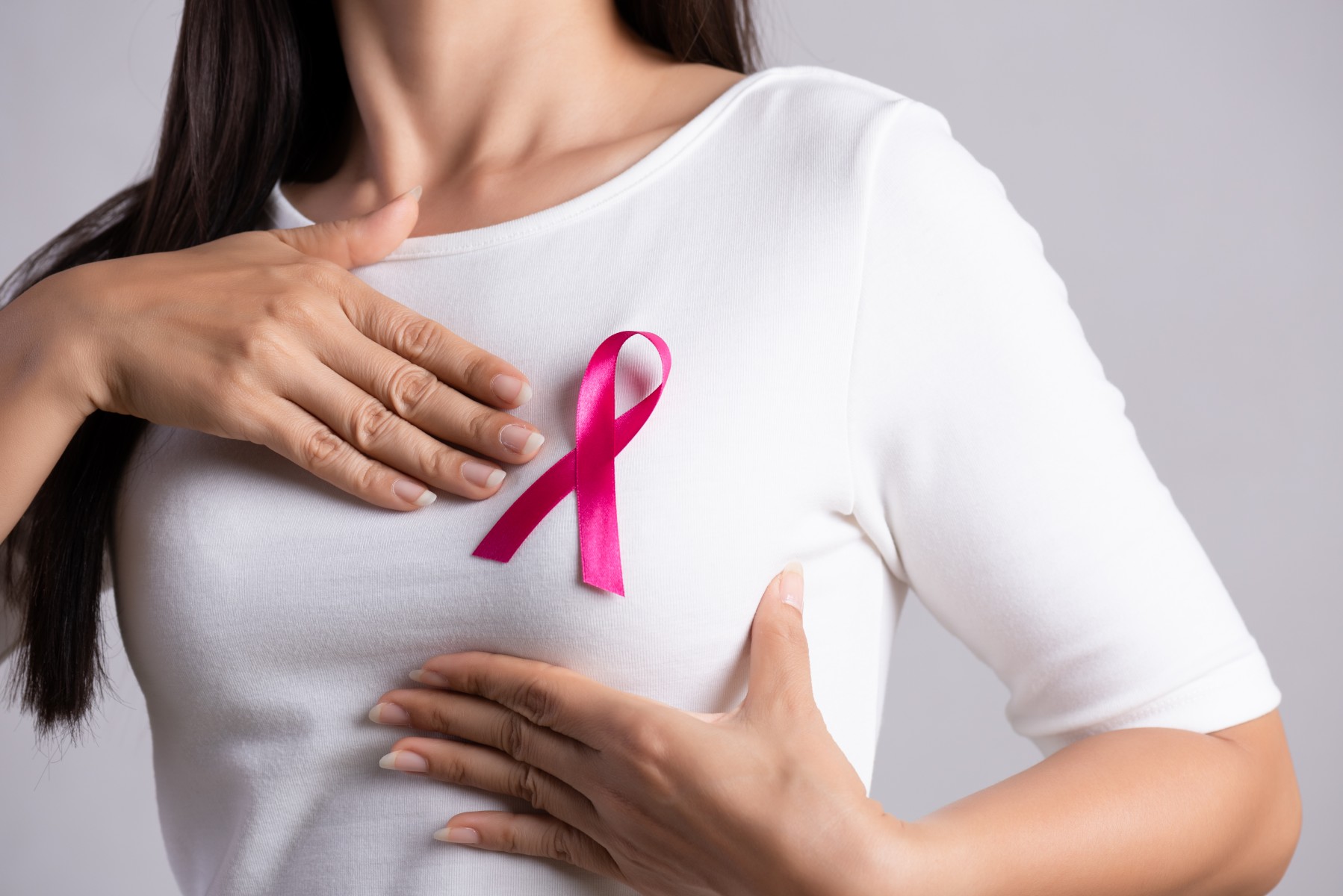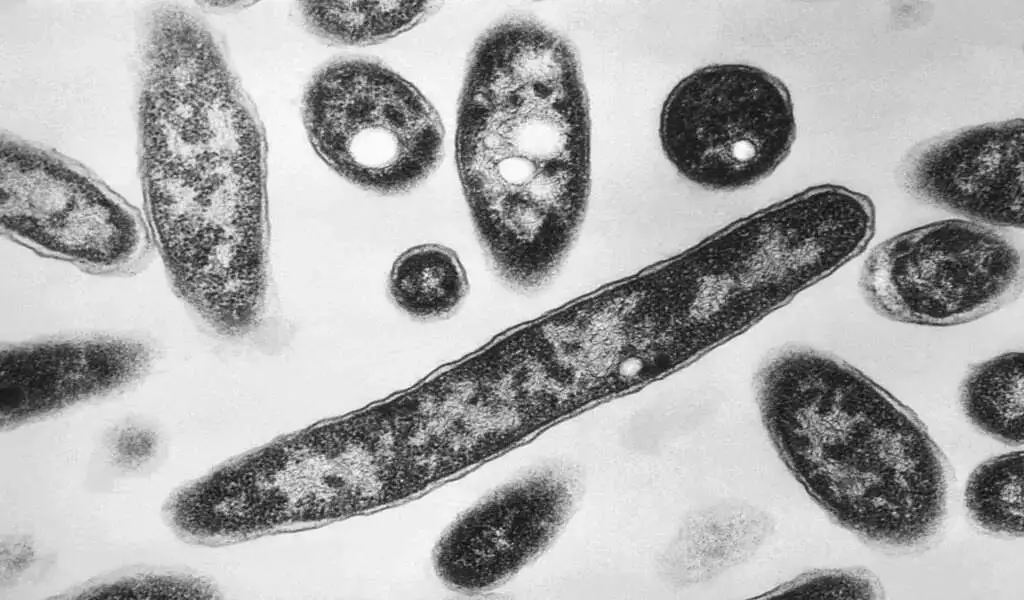Health
Breast Cancers Are Predicted By Gene Variants, According To a Study

Stanford Medicine examined thousands of breast cancer tumours and found that fetal DNA patterns predict cancer kind and severity decades later.
The findings challenge the concept that random mutations cause most cancers over time. Our parents’ germline DNA may affect whether the immune system detects and removes cancer-causing mutations or lets them proliferate.
“The hereditary factors causing cancer are little understood, and most cancers are believed to be caused by random cell division errors or bad luck,” says Christina Curtis, Ph.D.
It is not true that all cancers are random. Cancer is fought by genes and immunity.
New breast cancer origins theory and tumour development indicators.”
Science study senior author Curtis. PhD postdoctoral scholar Kathleen Houlahan led the study.
It was first proposed in 2015 that some tumours are born malignant and metastatic. These findings have been confirmed by other investigators as well, but these findings shed light on how early this occurs.”
Causes of breast cancer: evolving theories.
The study may help predict and treat breast cancer by revealing immune system and cancer cell insights.
Cancer prediction uses a few gene mutations. In 1 in 500 women, BRCA1 and BRCA2 cause breast and ovarian cancer, and Li Fraumeni syndrome causes childhood and adult malignancies.
Researchers suggest tens or hundreds of healthy gene variants may eternally prevent cancer. We predict the subtypes, metastases, and aggressiveness of cancer.”
Parental genes. Type O blood, brown hair, and blue eyes can come from parents. BRCA1, BRCA2, and TP53 mutations increase newborn cancer risk. However, finding other germline changes linked to future cancers is difficult.
Most cancer genes are somatic. Tens of millions of cells divide and die daily. Mutations and mistakes can occur during DNA replication. Cancer-causing mutations are found by comparing tumour DNA to blood or tissue germline genomes.
Breast tumour classification
In 2012, Curtis studied somatic mutations in hundreds of breast cancers using machine learning. She detected 11 subtypes with different prognoses and recurrence rates, and four were more likely to return 10 or 20 years after diagnosis, helping clinicians choose treatments and discuss long-term prognoses with patients.
BRCA1 and BRCA2 mutations cause TNBC. The germline genome may change breast cancer subtypes.
“We wanted to understand how inherited DNA might sculpt how a tumor evolves,” he adds. We tested immunity.
Protein-decorated cell membranes reveal healthy breast cancer cells.
The show uses HLA mutants. T lymphocytes monitor cell-problem epitopes like fashion police. Malignant cells have abnormal proteins, while infected cells have viral proteins. These errors stimulate T-cells to kill criminals.
Oncogenes—normal genes that defy cell control—were studied by Houlahan and Curtis. Genomic stuttering can make these mutations seem like DNA replicates of normal genes. Curtis initially identified breast cancer subgroups using oncogene amplifications.
Blingy T cells may prefer strong epitopes (golf-ball-sized turquoise vs. silver studs). Strong oncogenes fuel the immune system. Five vibrant turquoise earrings kill trendy T cells.
Breast tumours at various stages were studied for inherited oncogene sequence impacts on subtype. Those with a high germline epitope load (bling) and an HLA type that prominently displays that epitope were less likely to develop breast cancer subtypes that amplified that oncogene. Quite surprising.
Wandering immune cells promote aggressive, poor-prognosis breast cancer.
“At the early, pre-invasive stage, a high germline epitope burden is protective against cancer,” he says. Immuno-challenged high germline epitope tumours spread faster. Tumours shrink.”
There is a tug of war between tumours and immune cells, he says. There is a possibility that preinvasive cancers can be diagnosed and treated more easily. It may kill many cancers unknowingly. Sometimes immunity diminishes.
Immune escape mechanisms can develop in cancers. This finding clarifies this opaque mechanism and may lead to the development of therapeutic timings and methods for heating immunologically cold tumours for optimum effectiveness.”
To optimize treatment, prognosis, and recurrence surveillance for Curtis, researchers will stratify her 11 breast cancer subtypes using the germline genome.
It is used by doctors to develop cancer immunotherapies and to estimate the risk of cancer among healthy people based on blood samples.
“We began with a bold hypothesis,” Curtis said. The field had not previously considered tumour origins and evolution. This inherited, acquired, and andtumour-immunee co-evolution lens investigates cancer variations.”
Health
NYC Legionnaires’ Outbreak Reaches 90 Cases; 3 Deaths Are Reported

(VOR News) – According to the New York City Department of Health, 90 people have been ill and three have died from Legionnaires’ disease in Central Harlem. The authorities made the declaration.
In recent days, the city’s health office has suggested stricter guidelines for assessing building-based cooling towers. The towers in question are suspected of being the origin of the outbreak.
Just before Legionnaires became effective, the proposal was made.
Buildings can be cooled thanks to cooling towers, which are enormous devices that are placed on rooftops and release mist into the surrounding air. Mist is dispersed around the area by these towers. Using cooling towers is standard procedure in the building industry.
Legionella bacteria can grow in the tower if the water is not well cleaned or if it is excessively hot. By breathing in this filthy mist, people expose themselves to the risk of getting sick. This exposes them to the risk of being ill.
According to a Department of Health spokeswoman who talked to CNN, the new law “was in development well before the Legionnaires’ cluster in Central Harlem.” This information was obtained by CNN. CNN was successful in obtaining this information.
Building owners must register and maintain their cooling towers, which are inspected on a regular basis, according to CNN. Inspections of cooling towers are also possible. Cooling towers can also be inspected on their own initiative. Building owners are required by the current state law to provide this information to the authorities in charge of gathering it.
The proposal under consideration stipulates strict testing schedules, state-certified laboratories to analyze samples, and penalties for noncompliance.
As of right now, there is no information available on the financial penalty. Currently, there are fines ranging from $500 to $2,000 each instance for noncompliance with the maintenance requirements. These penalties may be applied to each case separately.
However, it is probable that significant issues may arise during the enforcement process. Inspections have significantly decreased, with fewer than half as many in 2024 as in 2017, when the city started keeping track of them, according to Gothamist, a non-profit journal affiliated with WNYC public radio.
Gothamist supplied this information. There is a significant discrepancy between these figures and the 2017 inspections. The city developed these specifics based on the data it had collected.
July 25th saw the city announce the Legionnaires cluster
Following an assessment of all operational cooling towers in the area, health department officials cleaned any cooling towers in the impacted area that contained Legionella. The authorities were the ones that supplied this information.
In the United States of America, the Centers for Disease Control and Prevention (CDC) has determined that pneumonia is actually a subtype of legionnaires’ disease. The CDC created this classification system.
You may experience a number of symptoms, such as coughing, fever, headaches, muscle problems, and shortness of breath, among others. You run the danger of experiencing a number of symptoms. Additionally, shortness of breath is another symptom that may be present.
The suggested plan of action for treating the illness is to utilize antibiotics. If you decide to ignore it, you could end up with serious issues like lung failure or even death. These issues might be avoided with the help of the treatment.
The data presented by the Occupational Safety and Health Administration (OSHA) suggests that there are roughly 6,000 reported incidents that occur in the United States of America each year.
According to those working in the medical field, the true figure is much greater than what is typically believed to be true. One of the factors contributing to this misperception is the difficulty in distinguishing between various forms of pneumonia, such as Legionnaires’ disease and other forms of pneumonia.
SOURCE: ME
SEE ALSO:
Preliminary Studies Show Eli Lilly’s Weight Loss Medication Is Promising
How to Understand Legionnaires’ Disease, Which Has Sickened Scores in NYC.
Health
Preliminary Studies Show Eli Lilly’s Weight Loss Medication Is Promising

(VOR News) – A recent study suggests that Eli Lilly’s new weight-loss medication helped individuals lose significant amounts of weight.
Patients were capable of losing an average of 27.3 pounds, which is equivalent to 12.4% of their total body weight, when they were administered the highest dose of orforglipron for 72 weeks.
Eli Lilly intends to submit an application to the Food and Drug Administration (FDA) of the United States of America requesting authorization to commercialize the medication before the end of the year.
Wegovy, Ozempic, Zepbound, and Mounjaro are Eli Lilly injectable medicines that are used to treat type 2 diabetes and obesity. If approved, the tablet could provide a simpler alternative to injection-based substances like the medications under consideration.
In an interview with The New York Times, Kenneth Custer, president of cardiometabolic health at Eli Lilly, stated that tablets are more straightforward to manufacture and can be produced on a large scale.
“The number of individuals we can assist has increased by orders of magnitude,” he stated, adding that pills may also be beneficial to those residing in countries that lack cold storage, which is essential for the delivery of intravenous medications.
The novel GLP-1 medicine is also similar to injectable therapy.
According to the Cleveland Clinic, GLP-1 medications function by causing patients to feel fuller for an extended period of time and by slowing down the rate at which they eat.
In the most recent clinical trial, 3,127 individuals were randomly assigned to receive either forglipron or a placebo. Three distinct concentrations were implemented to evaluate the efficacy of the medication.
In addition to a decrease in their overall body weight, individuals who consumed the medication experienced enhancements in their cholesterol, triglyceride, and blood pressure levels.
The Times reported that many of the recorded adverse effects were similar to those previously documented with injectable medications. These adverse effects included indigestion, constipation, diarrhea, and vomiting.
Additionally, Lilly conducted a study earlier this year to assess orforglipron in individuals with type 2 diabetes. They found that it produced advantages that were comparable to those of Ozempic in terms of weight loss and blood sugar reduction.
The Times reports that the business plans to make the pharmaceutical available for the treatment of diabetes in 2026, following the receipt of authorization from the FDA. At present, there is no direct comparison between the efficacy of orforglipron and injectable medications like Zepbound or Wegovy.
In a previous study, participants who utilized Zepbound experienced a 20.2% reduction in body weight over a 72-week period, while those who utilized Wegovy experienced a 13.2% reduction in body weight during the same time frame.
However, Eli Lilly experts believe the novel treatment may have numerous benefits.
Because of this, Dr. David Cummings, an obesity expert at the University of Washington in Seattle, posits that it may not be as beneficial as injections.
On the other hand, Cummings observes that “that feature alone could make it truly impactful” if it were to become significantly less expensive and simpler to manufacture.
Eli Lilly has not yet disclosed the price of the medication; however, the company intends to do so following the Food and Drug Administration’s (FDA) review of the drug in anticipation of its marketing approval.
It is estimated that 170 million individuals in the United States could potentially benefit from the use of pharmaceuticals for obesity, although Eli Lilly only approximately 8 million individuals are currently taking these medications.
He stated in an article published in The Times that the high cost and protracted production process associated with the production of injectable medications are among the primary causes.
Custer noted that tablets are more straightforward to manufacture and store, which suggests that this new treatment could potentially benefit a larger population.
SOURCE: USN
SEE ALSO:
How to Understand Legionnaires’ Disease, Which Has Sickened Scores in NYC.
The sniffles? Discover How COVID-19, Summer Colds, And More Can Affect You
Health
How to Understand Legionnaires’ Disease, Which Has Sickened Scores in NYC.

(VOR News) – The outbreak of Legionnaires’ disease in New York City has resulted in the illness of 58 individuals and the mortality of two, as of the end of July.
The outbreak that occurred in Central Harlem has been attributed to cooling towers, which are structures that utilize a fan and water to chill buildings, by the scientists from the city’s health authority.
However, we have resolved the issue. Initially, it was reported that eleven of these structures had tested positive for a specific type of bacteria that is responsible for Legionnaires’ disease.
However, the issue has been resolved.
It was strongly advised that individuals in the vicinity who were experiencing symptoms that were similar to those of the flu contact a medical professional at their earliest convenience.
This was of the uttermost importance to individuals who were fifty years of age or older, had lung diseases that had been present for an extended period of time, or smoked. You are only required to be cognizant of this.
How do you define Legionnaires’ disease?
This specific form of pneumonia is caused by Legionella bacteria. These bacteria have the capacity to proliferate in warm water and can also replicate throughout the water systems of buildings.
In addition to hot springs and showerheads, they may also be present in cooling towers and other comparable devices. It is feasible that you will find them in these locations. One of the most common ways to contract the disease is by inhaling aerosols generated by contaminated drinking water.
In addition, hospital patients may contract the Legionnaires’ Disease by ingesting contaminated ice or drinking water that has been contaminated with the virus, according to public health officials.
Furthermore, infants may be susceptible to the disease if they ingest water that contains the harmful substance. As a result, it is wholly impossible for individuals to acquire it from one another. According to the Centers for Disease Control and Prevention in the United States, symptoms may manifest within two days to two weeks of exposure.
For the majority of patients, this is the moment at which symptoms appeared. This condition has been linked to various symptoms, such as wheezing, fever, headaches, muscle aches, and shortness of breath.
What are the potential therapies for Legionnaires’ disease, in addition to the symptoms and indicators that are associated with this condition? Public health professionals have emphasized the significance of receiving both a diagnosis and treatment with the appropriate antibiotics as soon as feasible.
According to the World Health Organization (WHO), the severity of the illness can deteriorate during the initial week when treatment is not administered. Shock, renal or organ failure, and respiratory system failure are among the potential complications that may develop.
What can one do to prevent Legionnaires’ Disease from occurring?
The World Health Organization (WHO) has stated that the personnel responsible for the safety of water systems and buildings have the capacity to mitigate the risk by instituting measures that will limit the bacterium’s growth.
To illustrate, they should conduct routine cleansing and disinfection of cooling towers, ensure that spa pools are adequately chlorinated, and flush the taps of buildings that are not in use once a week during the week. The following are just a few of the objectives that personnel responsible for water safety should be able to accomplish.
By performing various preventative measures within the confines of their residences, it is feasible for individuals to mitigate their susceptibility to Legionnaires’ disease.
According to the health officials of New York, it is recommended that garden hoses be drained, water filters be cleaned and replaced in accordance with the manufacturer’s instructions, chlorine levels in pools and hot tubs be regularly monitored, and hot water heaters be flushed once or twice annually.
SOURCE: AP
SEE ALSO:
China Reports Thousands of Chikungunya Cases Amid a Mosquito-Borne Outbreak.
The sniffles? Discover How COVID-19, Summer Colds, And More Can Affect You
-

 News3 weeks ago
News3 weeks agoPeace Prize Awared to Venezuela’s María Corina Machado
-

 News2 months ago
News2 months agoTrump’s Ukraine Peace Push Met with Mainstram Media Maelstrom
-

 News2 months ago
News2 months agoDemocratic Party is Facing an Existential Crisis as it Hemorrhages Voters
-

 News2 months ago
News2 months agoDemocrat Mayors Reject Trump’s Help as Crime Explodes in Blue Cities
-

 Politics3 weeks ago
Politics3 weeks agoFar Left Socialist Democrats Have Taken Control of the Entire Party
-

 Politics3 weeks ago
Politics3 weeks agoHistorian Victor Davis Hanson Talks on Trump’s Vision for a Safer America
-

 News2 months ago
News2 months agoJasmine Crockett Faces Backlash as Texans Question Her Authenticity and Conduct
-

 Asia2 months ago
Asia2 months agoAsia Cup 2025: BCCI Confirms Indian Team Selection for















